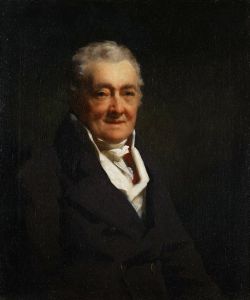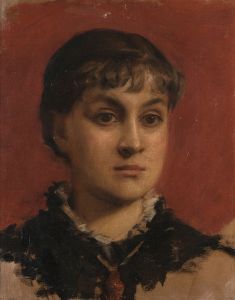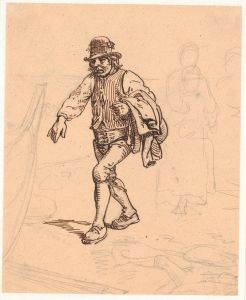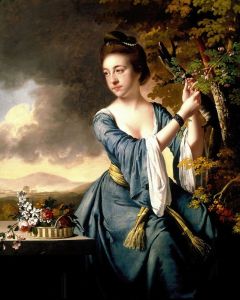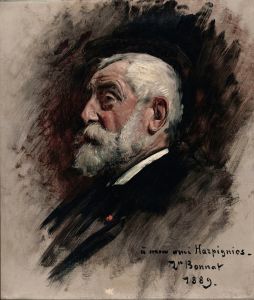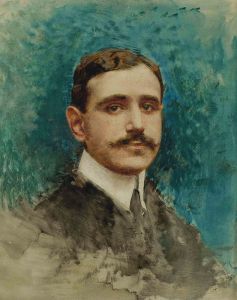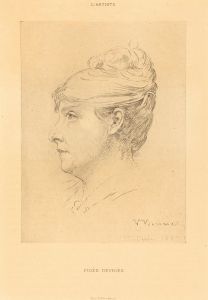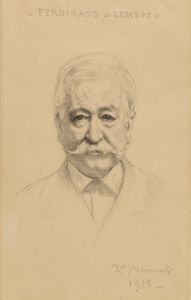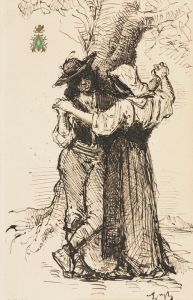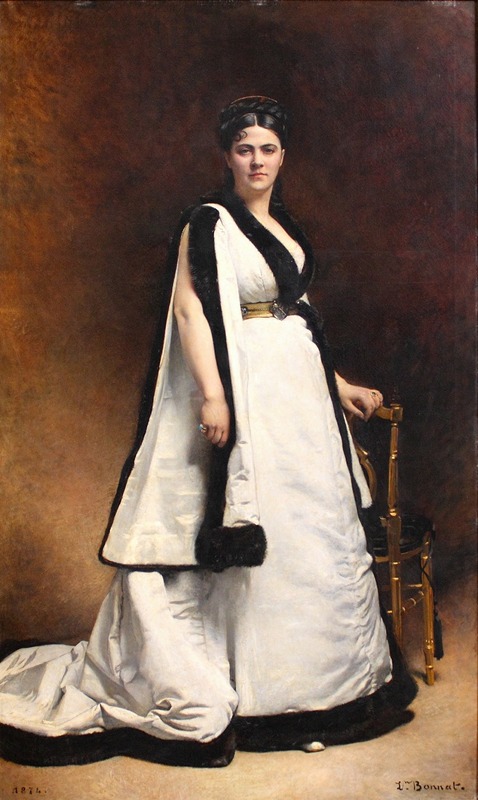
Madame Pasca
A hand-painted replica of Léon Bonnat’s masterpiece Madame Pasca, meticulously crafted by professional artists to capture the true essence of the original. Each piece is created with museum-quality canvas and rare mineral pigments, carefully painted by experienced artists with delicate brushstrokes and rich, layered colors to perfectly recreate the texture of the original artwork. Unlike machine-printed reproductions, this hand-painted version brings the painting to life, infused with the artist’s emotions and skill in every stroke. Whether for personal collection or home decoration, it instantly elevates the artistic atmosphere of any space.
Léon Bonnat's painting "Madame Pasca" is a notable work by the French artist, who was renowned for his portraiture and historical paintings in the 19th century. Léon Bonnat, born in 1833 in Bayonne, France, was a prominent figure in the art world during his time, known for his realistic style and meticulous attention to detail. He studied under the tutelage of Léon Cogniet and later in Madrid, where he was influenced by the works of Spanish masters such as Diego Velázquez and Francisco Goya. Bonnat's career was marked by his ability to capture the essence of his subjects, making him a sought-after portraitist among the elite of his era.
"Madame Pasca" is a portrait of the French actress Jeanne Silvain, known by her stage name Madame Pasca. She was a celebrated figure in the theatrical world during the late 19th century, known for her performances in both comedic and dramatic roles. The painting is believed to have been completed around the 1870s, a period when Bonnat was at the height of his career and Madame Pasca was enjoying significant success on the stage.
In the portrait, Bonnat employs his characteristic realism to depict Madame Pasca with a sense of dignity and poise. The painting captures her in a moment of introspection, with a serene expression that suggests both confidence and contemplation. Bonnat's use of light and shadow is particularly effective in highlighting the textures of her clothing and the subtle nuances of her facial features, demonstrating his skill in rendering lifelike representations.
The composition of "Madame Pasca" reflects Bonnat's mastery of portraiture, with a focus on the sitter's face and upper body. The background is kept relatively simple, ensuring that the viewer's attention remains on Madame Pasca herself. This approach is typical of Bonnat's portraits, where the emphasis is placed on the individual rather than the surroundings, allowing the personality and character of the subject to shine through.
Bonnat's work, including "Madame Pasca," is often noted for its psychological depth. He had a unique ability to convey the inner life of his subjects, capturing not just their physical likeness but also a sense of their personality and emotional state. This quality is evident in "Madame Pasca," where the actress's poised demeanor and thoughtful gaze invite viewers to ponder her thoughts and feelings.
"Madame Pasca" is part of Bonnat's broader body of work that includes portraits of many notable figures of his time, including politicians, artists, and members of the aristocracy. His portraits are characterized by their precision and the artist's commitment to capturing the true essence of his subjects. Bonnat's influence extended beyond his paintings; he was also a respected teacher, with students such as Henri de Toulouse-Lautrec and Georges Braque, who would go on to become significant artists in their own right.
Today, Léon Bonnat's "Madame Pasca" is appreciated not only for its artistic merit but also as a historical document that offers insight into the cultural and social milieu of 19th-century France. The painting remains a testament to Bonnat's skill as a portraitist and his ability to immortalize the figures of his time with grace and authenticity.





